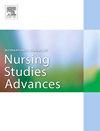长期护理机构中老年人的口腔保健:一项最新的系统综述和实施策略的荟萃分析。
IF 3.1
Q1 NURSING
International Journal of Nursing Studies Advances
Pub Date : 2024-12-31
DOI:10.1016/j.ijnsa.2024.100289
引用次数: 0
摘要
引言:长期护理机构中老年人口腔卫生保健不足,强调需要明确的循证实施策略来改善口腔保健。2013年进行了系统审查,并发表了新的证据。本研究旨在了解促进或改善长期护理机构老年人口腔保健的实施策略,探索其有效性,揭示行为改变技术中的策略内容,并报告当前研究结果与2013年研究结果的差异。方法:根据PRISMA指南对文献进行系统回顾,并对实施策略进行荟萃分析。检索了Cochrane图书馆、PubMed和CINAHL数据库,检索了2011年至2023年间发表的论文。使用行为改变技术编码手册确定策略。采用随机效应模型对口腔健康结果(“牙菌斑”和“假牙菌斑”)进行meta分析,使用R语言进行统计计算。结果:16项研究纳入当前结果;2013年的研究结果包括20项研究。本次综述纳入的高质量研究(67%)多于2013年(47%)。牙科保健专业人员参与了16项研究中的14项。16项研究中有14项使用和/或结合了五种或更多不同的实施策略:知识、意图、意识、自我效能、态度和行为促进。实施对护理人员的知识和态度有正向影响;然而,老年人的口腔健康并没有得到改善。在2013年的综述中,更多的研究表明联合口腔健康测量是有效的(71%),而不是目前的综述(20% - 33%)。四项研究的牙菌斑(0-3级)荟萃分析显示,平均差异有统计学意义(- 0.21)(CI 36;-。07, Cohen’s d - 0.29)。对3项研究的义齿菌斑(0-4级)进行meta分析,平均差异有统计学意义(- 0.76)(CI -1.48;-。05, Cohen's d - 0.88)。结论:本综述采用了更多的实施策略和组合来实施口腔长期护理。实施策略正向影响护理人员的知识和态度;然而,老年人的口腔健康并没有得到改善。牙菌斑荟萃分析显示口腔护理实施是有效的;对于义齿菌斑,效应量较大,因此可能比牙菌斑具有更大的临床价值。本文章由计算机程序翻译,如有差异,请以英文原文为准。
Oral health care in older people in long-term care facilities: An updated systematic review and meta-analyses of implementation strategies
Introduction
Oral health care of older people in long-term care facilities is insufficient, stressing the need for clear evidence-based implementation strategies to improve oral care. In 2013, a systematic review was performed and new evidence was published. This study aimed to gain insights into implementation strategies used to promote or improve oral health care for older people in long-term care facilities, explore their effectiveness and uncover strategy content in behavioral change techniques, and report the differences between the current results and those of the 2013 study.
Methods
A systematic review of the literature according to PRISMA guidelines and meta-analyses of implementation strategies were performed. Cochrane Library, PubMed, and CINAHL databases were searched for papers published between 2011 and 2023. Strategies were identified using the Coding Manual for Behavioral Change Techniques. Meta-analyses of oral health outcomes (“plaque” and “denture plaque”) were performed with random-effects models using R language for statistical computing.
Results
16 studies were included in the current results; 20 studies were included in the 2013 findings. More high-quality studies (67 %) were included in this review than in 2013 (47 %). Dental care professionals were involved in 14 of the 16 studies. Fourteen of the 16 studies used and/ or combined five or more different implementation strategies: knowledge, intention, awareness, self-efficacy, attitude, and facilitation of behavior. Implementation positively affected the knowledge and attitudes of the nursing staff; however, the oral health of older people did not necessarily improve. In the 2013 review, more studies indicated combined oral health measurements were effective (71 %) than in the current review (20 %–33 %). Meta-analysis of four studies on dental plaque (0—3 scale) showed a significant, statistically small mean difference of -.21 (CI -.36; -.07, Cohen's d -.29) between the control and treatment group. Meta-analysis of three studies on denture plaque (0—4 scale), showed a significant, statistically large mean difference of -.76 (CI -1.48; -.05, Cohen's d -.88).
Conclusions
In this review, more implementation strategies and combinations were used to implement oral care in long-term care. Implementation strategies positively affected the knowledge and attitudes of nursing staff; however, the oral health of older people did not necessarily improve. Meta-analyses on plaque showed that oral care implementations are effective; for denture plaque, the effect size was large and thus may have more clinical value than for dental plaque.
求助全文
通过发布文献求助,成功后即可免费获取论文全文。
去求助
来源期刊

International Journal of Nursing Studies Advances
Nursing-General Nursing
CiteScore
5.80
自引率
0.00%
发文量
45
审稿时长
81 days
 求助内容:
求助内容: 应助结果提醒方式:
应助结果提醒方式:


